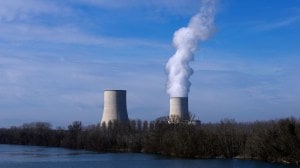Prime Minister Narendra Modi will visit various temples in Tamil Nadu over the weekends before the inauguration of the Ram Mandir in Ayodhya on Monday, his office announced on Thursday.
According to the Prime Minister’s Office (PMO), Modi will visit Sri Ranganathaswamy Temple in Tiruchirappalli, Sri Arulmigu Ramanathaswamy Temple and Kothandaramaswamy Temple, Dhanushkodi, in Tamil Nadu on January 20 and 21.

The statement said, “On January 20, at around 11 am, the Prime Minister will participate in a programme at Sri Ranganathaswamy Temple in Tiruchirappalli, Tamil Nadu. The Prime Minister will also listen to various scholars reciting verses from the Kamba Ramayanam in this temple.”
Story continues below this ad
“Thereafter, the Prime Minister will reach Rameswaram at around 2 PM and perform darshan and puja at the Sri Arulmigu Ramanathaswamy Temple,” it added.
The statement further said, “On January 21, the Prime Minister will perform darshan and puja at the Kothandaramaswamy Temple, Dhanushkodi. Near Dhanushkodi, the Prime Minister will also visit Arichal Munai, which is said to be the place from where the Ram Setu was built.”
“Continuing the practice being observed during the Prime Minister’s visit to multiple temples in the last few days, wherein he attends Ramayana chanting in various languages (such as Marathi, Malayalam and Telugu), in this temple (Sri Arulmigu Ramanathaswamy Temple), he will attend a programme – ‘Shri Ramayana Paryana’. In the programme, eight different traditional Mandalis will recite the Sanskrit, Awadhi, Kashmiri, Gurumukhi, Assamese, Bengali, Maithili, and Gujarati Ramkathas (recounting the episode of Lord Ram’s return to Ayodhya),” the PMO statement said.
“This is in line with the Bharatiya cultural ethos and bonding, which is at the core of ‘Ek Bharat Shreshtha Bharat’. At the Sri Arulmigu Ramanathaswamy Temple, the Prime Minister will also participate in Bhajan Sandhya, where multiple devotional songs would be sung at the temple complex in the evening,” it said.
Story continues below this ad
Notably, The Prime Minister has visited several temples in Maharashtra, Andhra Pradesh and Kerala in the last few days.
Here’s a brief description of the three temples that Prime Minister Narendra Modi will visit ahead of the consecration of the Ram Mandir in Ayodhya on January 22.
Sri Ranganathaswamy Temple
Located in Srirangam, Trichy, the temple is one of the most ancient temple complexes in the country and finds mention in various ancient texts, including the Puranas and the Sangam era texts.
It is famous for its architectural grandeur and its numerous iconic gopurams. The main deity worshipped here is Sri Ranganatha Swamy, a reclining form of Lord Vishnu.
Story continues below this ad
Vaishnava scriptures mention the connection between the idol worshipped in this temple and Ayodhya. It is believed that the image of Vishnu which used to be worshipped by Lord Ram and his ancestors was given by him to Vibhishana to take it to Lanka. On the way, this idol was fixed in Srirangam.
Sri Ramanujacharya, the great philosopher and saint, is also deeply associated with this temple’s history. Moreover, there are various important places in this temple – for example, the famous Kamba Ramayanam was first presented publicly by the Tamil poet Kamban in a particular place in this complex.
Sri Arulmigu Ramanathaswamy Temple, Rameshwaram
The main deity worshipped in this temple is Sri Ramanathaswamy, which is a form of Lord Shiva. It is a widely held belief that the main lingam in this temple was installed and worshipped by Lord Ram and Sita. The temple contains one of the longest corridors, which is also famous for its beautiful architecture. It is one among the Char Dhams – Badrinath, Dwarka, Puri and Rameshwaram. It is also one among the 12 Jyotirlingas.
Kothandaramaswamy Temple, Dhanushkodi
This temple is dedicated to Sri Kothandarama Swamy. The name Kothandarama means Ram with a bow. It is located in a place called Dhanushkodi. It is said that this is where Vibhishana first met Lord Ram and asked him for refuge. Some legends also say that this is the place where Lord Ram conducted the coronation of Vibhishana.
(Temple information source: PMO statement)









